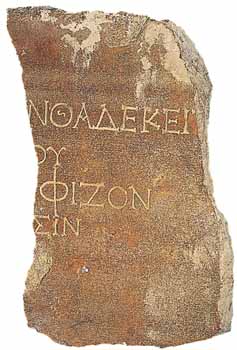

|
|

|

|
||||||||||||||||||
|
|||||||||||||||||||
| Associazione
Culturale e Casa Editrice - Via San Costanzo, 8
80073 Capri Italy - Email info@oebalus.org |
|||||||||||||||||||
|
Pre-Roman Capri Part of a network of systematic maritime contacts since the Neolithic, the island of Capri was surely known to the commercial traffic (Greek, Aegean and Oriental) which preceded and accompanied the founding and confirmation of the Greek colony of Cumae. However, although archaeological documentation sheds much light on these pre-colonial traffic flows with regard to the island of Ischia, little or nothing is known about the island of Capri. The island was certainly occupied in the 7th century BC by the Greeks of Cumae and used as a station from which to control the traffic of the Gulf of Naples. The island of Ischia and Punta Campanella were also occupied and the same period also saw the founding of settlements such as Partenope and Pozzuoli. Becoming part of the colony of the Greeks of Cumae in the 7th century BC, the island gradually saw Greek communities settle alongside the indigenous population, although the island continued to be known by its Italic name. The historian Strabo mentions the existence of two ancient cities which eventually become one single conglomerate. The role and the function of the Greek community of Capri was reflected in a story by Virgil according to which the island was inhabited by the Teleboans, a mythological population of Greek pirates. The use of pirate fleets to control maritime movements encouraged the hypothesis that the specific function of the Greeks on the island of Capri was to control maritime traffic in the Gulf on behalf of the city of Cumae. As from the 5th century BC, the Greeks of Cumae left the island and Capri came under the jurisdiction of the Greek city of Neapolis - the future Naples. |
 Funeral inscription in Greek (Capri, Soprintendenza Archeologica) |
|
|
(text by Eduardo Federico - Photographs
by Marco Amitrano)
|
||